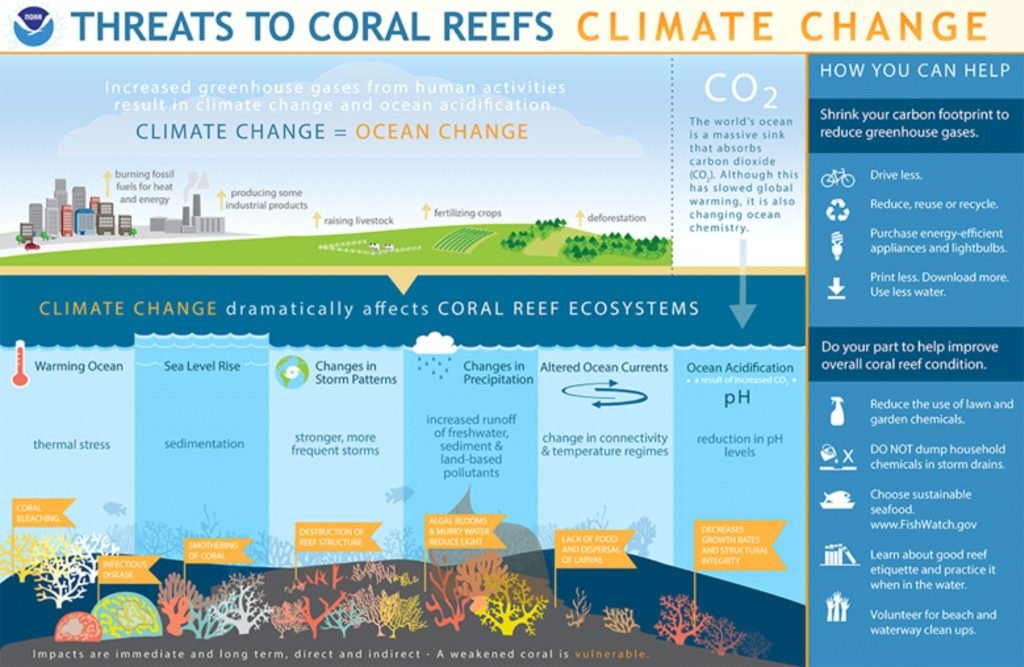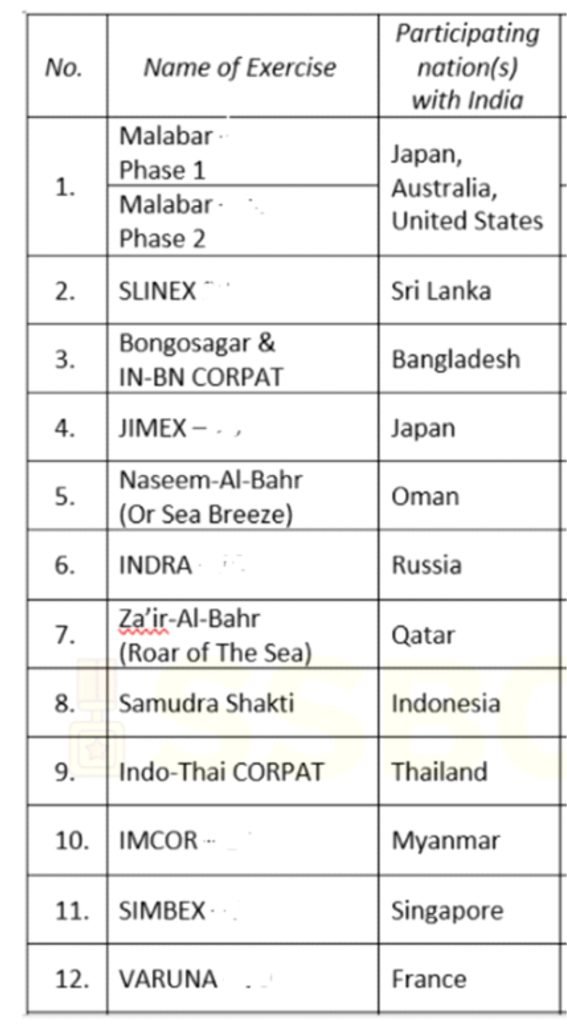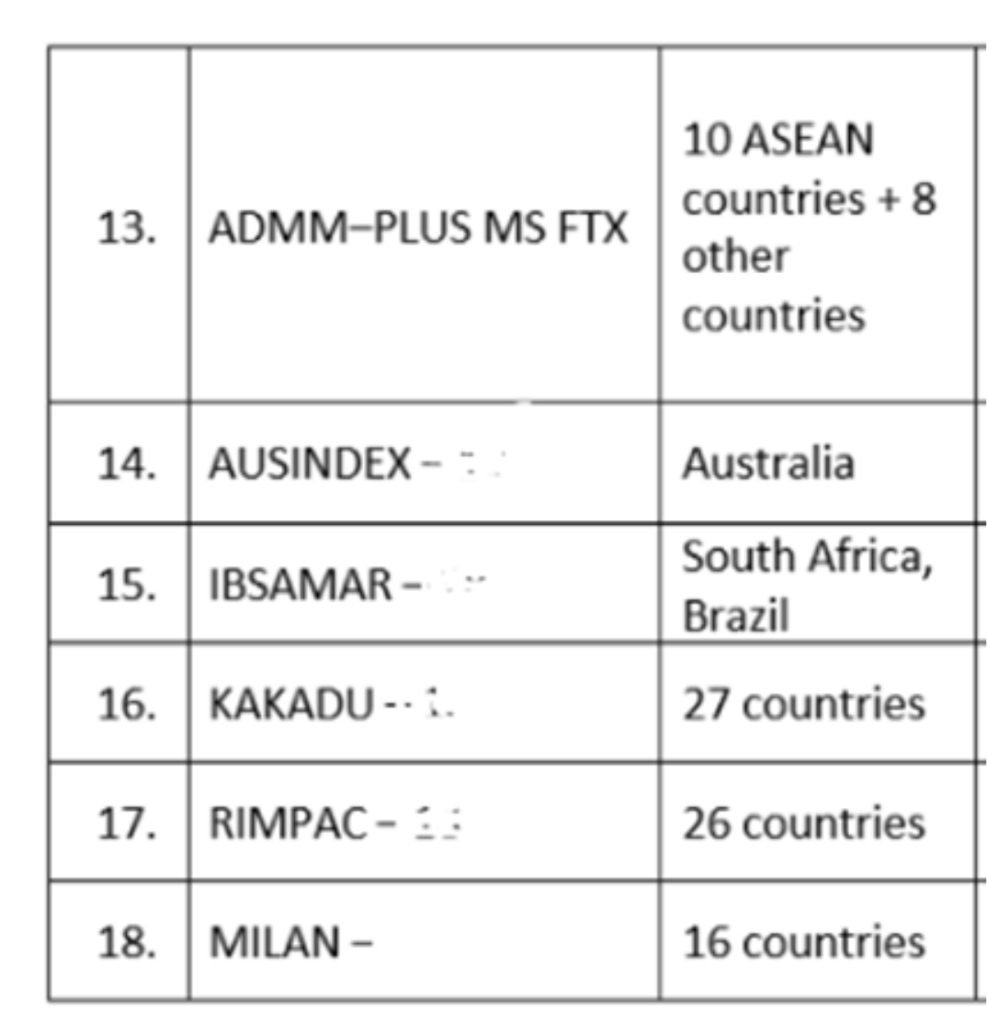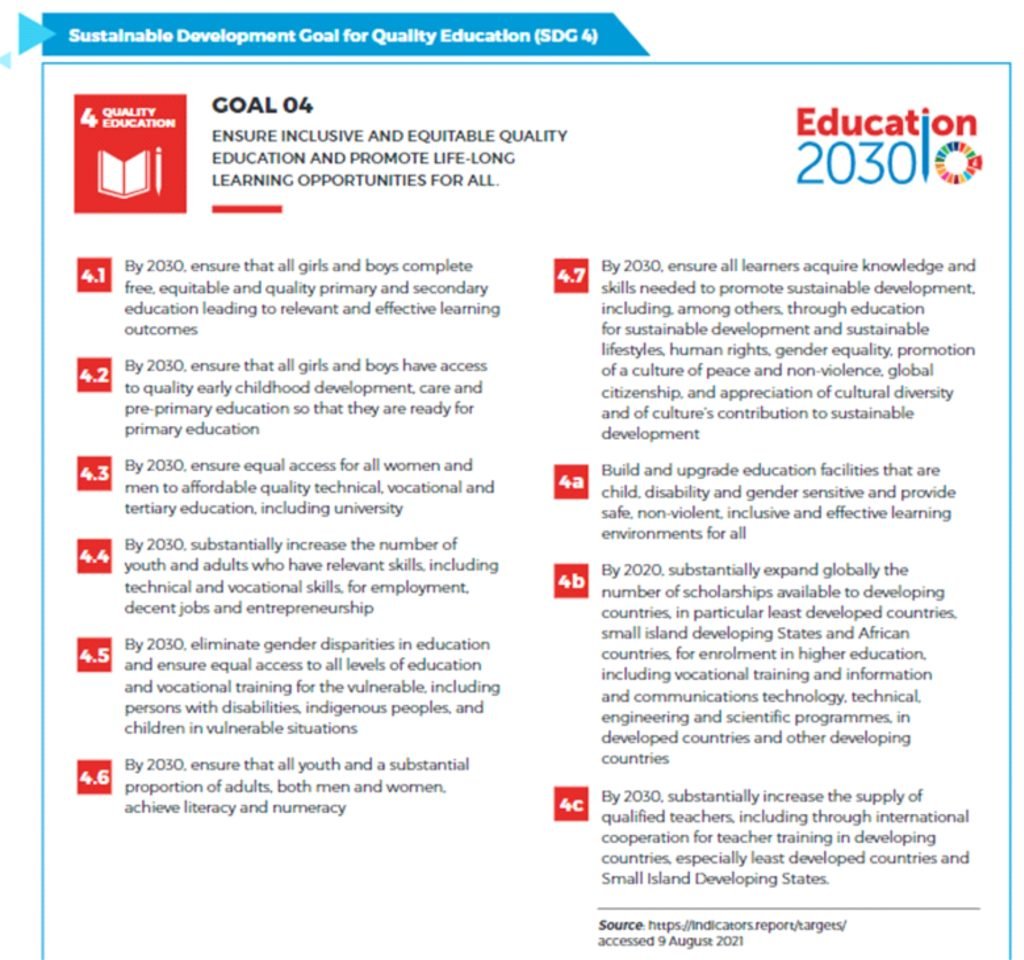Global Coral Reef Monitoring Network (GCRMN) Report
Reuters
GS 3: Environment and Conservation
Context:
- Recently, Global Coral Reef Monitoring Network (GCRMN) has released a report on the status of coral reefs across the world.
Highlights:
- The report underlined the catastrophic consequences of global warming but said that some coral reefs can be saved by arresting greenhouse gases.
- Rising ocean temperatures killed about 14% of the world’s coral reefs between 2009 and 2018.
- Coral bleaching events caused by elevated sea surface temperatures” as the biggest driver of coral loss.
- It is equivalent to more than all of the living coral in Australia.
- Reasons for the decline: The report found that warming caused by climate change, overfishing, coastal development and declining water quality has placed coral reefs around the world under “relentless stress.”
Positive findings:
- Coral reefs in east Asia’s Coral Triangle accounts for more than 30 per cent of the world’s reefs but has been less impacted by rising sea surface temperatures.
- Despite a decline in hard coral cover during the last decade, on average, these reefs have more coral today than in 1983, when the first data from this region were collected, the scientists noted.
- In 2019, the world regained 2% of its coral cover in spite of a short interval between mass coral bleaching events in the last decade.
- These instances mean that these critical ecosystems have the capacity to recover if pressure on them eases, the researchers noted. They can even resuscitate to their pre-1998 health in the next ten years, the report mentioned.
Significance of Corals:
- Though corals occupy less than 1% of the ocean floor but over one billion people benefit directly from the reefs.
- The value of goods and services provided by coral reefs is estimated to be $2.7 trillion per year including $36 billion from coral reef tourism.
- As per some reports, the net economic value of the world’s coral reefs could be nearly tens of billions of dollars per year.

JIMEX
PIB
Prelims Fact
Context:
- The fifth edition of India – Japan Maritime Bilateral Exercise, JIMEX, between the Indian Navy (IN) and the Japan Maritime Self-Defence Force (JMSDF), will be held in Arabian Sea from 06 to 08 October 2021.
About:
- JIMEX series of exercises commenced in January 2012 with special focus on maritime security cooperation. The last edition of JIMEX was conducted in September 2020.
- JIMEX-21 aims to develop common understanding of operational procedures and enhance inter-operability through conduct of a multitude of advanced exercises, across the entire spectrum of maritime operations.
- Multi-faceted tactical exercises involving weapon firings, cross-deck helicopter operations and complex surface, anti-submarine and air warfare drills will consolidate coordination developed by the two navies.


State of the Education Report (SOER)
Indian Express
GS 2: Polity and Governance
Context:
- UNESCO launched its 2021 SOER for India: “No Teachers, No Class” (third edition).
About SOER for India:
- Annual flagship report of UNESCO.
- Based on extensive research.
- Theme: Teachers, teaching and teacher education, underscores that the work of teaching is complex.
- It is largely based on analysis of Periodic Labour Force Survey (PLFS) and the Unified District Information System for Education (UDISE) data.
- It attempts to provide an understanding of key aspects of the teaching profession, provides a profile of the 9.6 million teaching workforce, as well the challenges of their intricate teaching routine and their professional development.
- The report aims to serve as a reference for enhancing the implementation of the NEP and towards the realization of the SDG.4 target 4c on teachers.
Highlights:
- Lack of teachers: The data suggests that the teaching cadre is generally young, with over 65% of teachers aged less than 44 years. But, in about 15 years, 27% of the current workforce will need to be replaced. The workforce has a deficit of over 1 million teachers(at current student strength).
- Apart from that, almost, 69% of teachers in India are working without job contracts in private schools.
- Poor student-teacher ratio: The overall number of teachers (around 9.5 million) looks perfect to maintain a good pupil-teacher ratio. But there is a segmental disparity. For instance, the pupil-teacher ratio (PTR) at senior secondary schools is 47:1 as against 26:1 of the overall school system.
- Prevalence of single-teacher institutions: At the national level, 7% of schools are single-teacher schools, the percentage is far higher in several states. Around 10% to 15% of schools in several states were single-teacher institutions.
- Women make half of the teacher workforce: Half of India’s 9.43 million school teachers are women. In some states and union territories (UTs) over 70% of teachers are women. These include Chandigarh (82%), Delhi (74%), Kerala (78%), Punjab (75%) and Tamil Nadu (75%).
- Low retention rates: Overall retention is 6% for elementary education and 59.6% for secondary education in 2019-20.
- Low access to the Internet: Access to the internet in schools is 19% all over India – only 14% in rural areas compared to 42% in urban areas.
- Technological challenges: The use of technology in education has exposed a range of issues – lack of devices and Internet bandwidth for a significant proportion of students, lack of preparedness of teachers in the use of technology, and lack of resources in Indian languages.
Recommendations:
- Improve the terms of employment of teachers in both public and private schools
- Increase the number of teachers
- Improve working conditions in North-Eastern states, rural areas and ‘aspirational districts
- Recognize teachers as frontline workers
- Increase the number of physical education, music, art, vocational education, early childhood and special education teachers.
- Value the professional autonomy of teachers
- Build teachers’ career pathways
- Restructure pre-service professional development and strengthen curricular and pedagogical reform
- Provide teachers with meaningful ICT training
- Develop teaching governance through consultative processes, based on mutual accountability

Decriminalise Cannabis
The Times of India
Context:
- The arrest and custodial interrogation of celebrity attendees of a cruise party has reopened the debate over criminalisation of cannabis.
About:
- India criminalised cannabis under American pressure in 1985 through the Narcotic Drugs and Psychotropic Substances Act.
- As per GoI surveys, even after three decades of criminalization of cannabis, ganja and charas usage remains high (1.3 crore consumers, and 2.2 crore for bhang).
- America and many countries are now decriminalizing cannabis for medical or recreational use. But India refuses to change its stance regarding this.
Punishment under NDPS Act in case of using cannabis:
- NDPS Act prescribes up to one-year rigorous imprisonment for those involved in cannabis transactions of “small quantity”.
- 1-10 years for “quantity lesser than commercial quantity but greater than small quantity”
- 10-20 years for “commercial quantity”.
Way forward:
- Instead of following the above punishment procedure, NDPS must evolve a three-tier gradation of offences.
- Cannabis should be decriminalized.
- Those involved in manufacture, trafficking and supply of hard drugs like meth, heroin, cocaine etc must face the most prohibitive punishment.
- Those consuming these banned substances should be tried under civil law, not criminal law – a steep fine would be an appropriate punishment.
- This will allow anti-narcotics authorities to concentrate on supply chains that feed the Indian underground narcotics market and the main players in that market. Raiding parties will not give us final result.
- Anti-narcotics investigators should be the first ones to ask for such a change in law and priorities as their resources are wasted going after small time users.

Youth hit by COVID’s mental toll
Times of India
GS 2: Social Issues
Context:
- Release of UNICEF’s global flagship publication: “The State of the World’s Children 2021; On My Mind: promoting, protecting and caring for children’s mental health”.
About:
- The report details the significant impact of COVID-19 pandemic on children’s mental health.
- The report has found that around 14% of 15 to 24-year-olds in India, or 1 in 7, reported often feeling depressed or having little interest in doing things. Across 21 countries, the median was one in five young people.
- In the UNICEF survey across 21 countries, only 41% of young people in India were willing to seek support for mental health problems, compared to an average of 83% for 21 countries.
- As per the report, India was the only one of 21 countries where only a minority of young people felt that people experiencing mental health issues should reach out to others. In every other country, a majority of young people (ranging from 56 to 95%) felt that reaching out was the best way to deal with mental health issues.
- Over 286 million children up to grade 6 were out of school in India between 2020-2021. UNICEF’s rapid assessment in 2021 found that only 60% could access digital classrooms. Many would not be able to continue their education.
- Meanwhile, wide gaps persist between mental health needs and mental health funding. India has spent only 0.05% of its health budget annually on mental health, according to Indian Journal of Psychiatry 2017.
- As the trend of nuclear family instead of joint family has increased in our society, mental health problems have become frequent in children.

